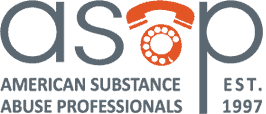By: C. Wade, M. Kallupi, D. Hernandez, et al.
Researchers are evaluating electrical stimulation of subcortical structures as a possible treatment for a number of neurological and psychiatric disorders, including Parkinson’s disease and severe depression. In small clinical trials, high-frequency electrical stimulation of the subthalamic nucleus (STN HFS) has reduced obsessive-compulsive disorder and other compulsive behaviors. Those findings suggest that STN HFS might help people with addiction overcome urges to take drugs.
To explore that possibility, Drs. Carrie L. Wade and Oliver George and colleagues at the Scripps Research Institute administered STN HFS to rats while exposing the animals to experimental protocols that elicit behaviors that are analogous to human opioid use. Their results suggest that STN HFS may:
Reduce heroin’s reinforcing effect: Rats pressed a lever to self-administer heroin less often when receiving STN HFS than in an untreated condition. The reduction in lever pressing resulted in lower heroin intake when receiving STN HFS, and indicates that the rats experienced heroin’s reinforcing effect less strongly when receiving STN HFS Prevent the rapid relapse to heavy opioid use that typically occurs when a person is reintroduced to the drug after a period of abstinence: Rats that received STN HFS escalated heroin self-administration less rapidly than control animals after a period without access to the drug.
Dr. Wade says, “We conclude that deep brain electrical stimulation (DBS) may be an effective strategy for treating people with severe opioid use disorder, particularly patients for whom behavioral and pharmacological treatments have failed.” The technique’s invasiveness will make it less apt, however, for use in patients with less intractable addiction. DBS electrical pulses are administered through micro-electrodes that are surgically placed in the brain. Moreover, multiple DBS sessions might be required to maintain a successful outcome.
The mechanisms whereby DBS may produce therapeutic effects remain ill-defined. Drs. Wade and George and colleagues used immunohistochemistry and electrophysiology to assess the effect of STN HFS on neuronal activity in rats. They found that their STN HFS regimen reduced neuronal activity in various brain regions and increased it in others. Activity declined in the nucleus accumbens shell, a region that mediates the reward value of drugs, and increased in the prefrontal cortex, a center of control over impulsive behaviors (see Figure 2).
Dr. Wade says, “These results identify novel targets for DBS and also may facilitate the development of noninvasive brain-stimulation techniques that can target these brain regions.” One such noninvasive technique, transcranial magnetic stimulation, has shown potential as a treatment for cocaine dependence.
Further studies are needed to establish whether DBS will have clinical utility as a treatment for drug dependence and, if so, in what circumstances. Drs. Wade and George note that animal studies such as theirs cannot model all of the various factors that can lead human patients to drop out of treatment or relapse after having achieved abstinence. Nevertheless, says Dr. George, “Although DBS is invasive compared with other forms of treatment, such as medication-assisted treatment, replacement therapy, behavioral therapy, and behavioral modification, it may represent a viable alternative for patients who are at high risk of overdose and for whom other treatments have failed.”
The study was supported by NIH grant DA029821.
Wade, C.L.; Kallupi, M.; Hernandez, D.O. et al. High-frequency stimulation of the subthalamic nucleus blocks compulsive-like re-escalation of heroin taking in rats. Neuropsychopharmacology 42(9):1850-1859, 2017

